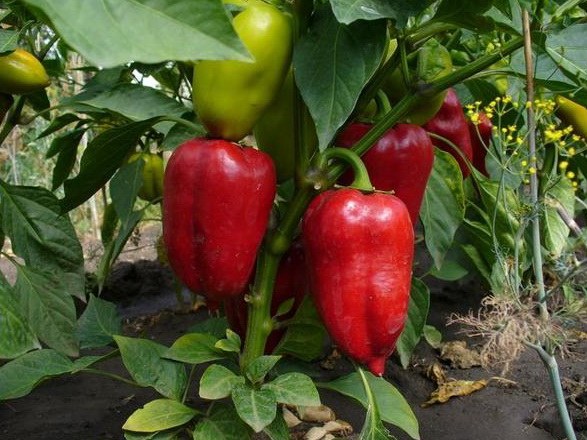You will need
- Seeds of pepper, a container for seedlings, feeding the soil.
Instruction
1
Pepper is very heat-loving plant. Therefore grows only at the temperature of +18...+25 °C. When the thermometer reading drops below +18 °C, development is slowed down pepper. And at a temperature of +13 °C, and even stop moving. Also, the vegetable requires a large enough daylight. Gardeners start planting peppers in January and February, but only if in future it is planned to transplant in the greenhouse. The optimal period for sowing pepper is the first week of March. At this time, day already bright enough, and the thermometer is slowly creeping up. Pepper does not tolerate even partial shade, so when there is insufficient light, use a fluorescent lamp.
2
As pepper seeds germinate for a long time, before planting these sparging. To do this, use a vessel of elongated shape or aquarium pumps. Keep the pepper seeds in water, saturated with oxygen within 24-36 hours. Then lay the seeds on a damp cloth that is place in a very warm location (+25+30°C). Wait until the seeds begin to naklevyvaniya, and sow them in the ground. The soil for peppers, choose light and loose. 2 parts take soil from the garden (it must be healthy), add 1 part peat and 1 part humus. Depth of sowing should not be more than 1-1. 5 cm, otherwise the seedlings will be painful.
3
Usually sweet pepper is rising in a week or a little over, provided that the seeds were well treated. Before the emergence maintain the air temperature of 24-25°C. When the seedlings hatch, lower the temperature to +18°C, to give the root system is well developed. At the same time it will be a kind of tempering for peppers. Then the temperature should again increase.
4
As soon as the pepper will be two or three true leaves, transplant it into individual pots or seedlings in the same capacity at a far distance. Growing up, the pepper seedlings begin to interfere with each other, their leaves touch, the roots can get complicated. For transplants use the same soil composition in which the peppers were growing before. Make holes in the new container, pour water on them. Then gently remove the seedling from the soil and drop it in the hole along with the lump of earth on the roots. After the transplant, tamp the ground with your hands so it does not remain voids. Transplanted the pepper at the time preterite, and then put in a permanent Sunny location. Water as needed separated by water.
5
For transplanting in the open ground height of seedlings should be at least 20 cm at one Bush pepper - at least 8-10 developed leaves side. Planted pepper only when the danger of frost has passed and soil temperature is at least +15°C. Sealed pepper in the ground at the same level at which it grew in the glass. After about a week, along with the watering can to fertilize. Pepper responsive to organic and mineral fertilizers, especially nitrogen. Before transplanting the plants put into each hole with 1 tbsp. of urea and add water. It is the nitrogen increases the number of ovaries. However, an excess reduces the resistance of pepper to diseases. Application of phosphorus and potassium fertilizers affect the quality of the fruit. In addition, perform feeding mullein or chicken droppings.
6
The fruits of pepper grow on the side shoots. The bloom is white. After that, the shoots formed the ovary. The fruits grow in the downward direction. Initially they are quite small, but increasing with each passing day. Collect the fruits in the phase of biological maturity when they begin to slightly blush. In this phase the pepper accumulates the highest amounts of vitamin C, sugars and other nutrients. After the timely collection of large fruit the formation of new ovaries. Pepper cut with a sharp knife, but do not break off, otherwise the plant may rot.
Note
For the cultivation of pepper is also needed calcium. So don't forget to bring the soil calcium nitrate.
Useful advice
For the formation of a compact hive, remove the top of the main stem of a plant with a height of 20 cm In the hot and humid summer, perform a side-shoot removing side shoots.
